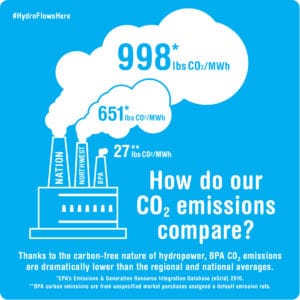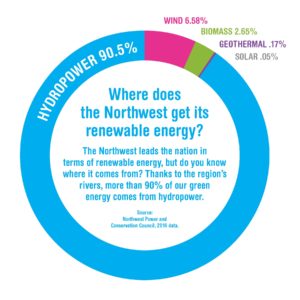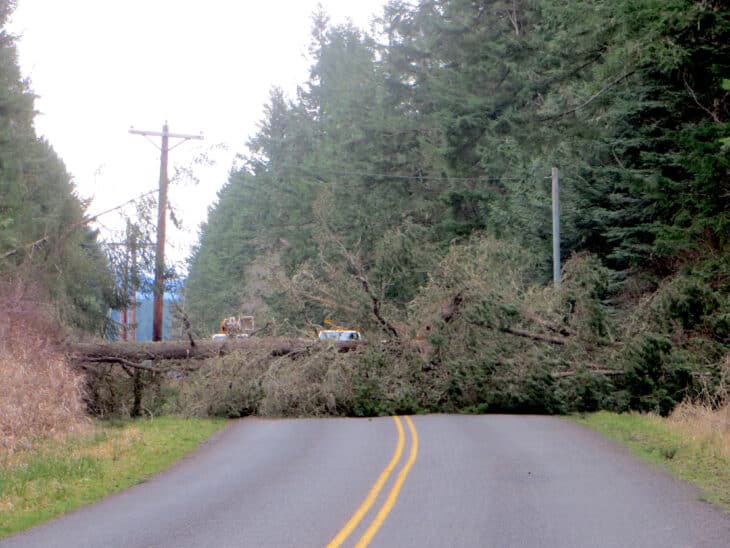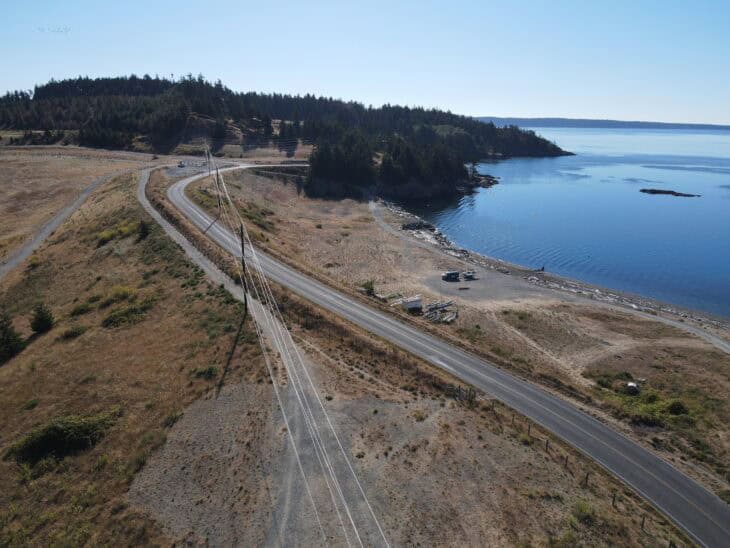Quick Fact: Why Hydropower is Important to our Power Supply
Hydro is one of the cleanest and lowest-cost forms of energy, cleaner even than solar and wind power. This makes it an essential resource for fighting climate change through decarbonization, especially as transportation – which accounts for ~40% of greenhouse gas emissions – shifts to electricity.
 About 86% of OPALCO’s energy comes from hydro, supplied from Bonneville Power Administration (BPA) through our power provider PNGC. Hydro is the northwest’s superpower, contributing more than 90% of renewable energy in the region.
About 86% of OPALCO’s energy comes from hydro, supplied from Bonneville Power Administration (BPA) through our power provider PNGC. Hydro is the northwest’s superpower, contributing more than 90% of renewable energy in the region.- Hydro power is the ultimate backup battery for “firming” intermittent resources like solar and wind energy. Hydro can be rapidly ramped up and down to firm solar/wind when the ‘sun don’t shine and the wind don’t blow.’
- As OPALCO increases its local energy resilience by deploying solar, wind and tidal generation, hydro will be essential for firming them up. This is also true for the Northwest region as they replace coal burning power plants with wind and solar.
- Countries like Germany, which have some of the most expensive and dirty energy in the developed world, are trying to reduce their dependence on coal power by rapidly deploying renewable energy. But they don’t have enough hydro to firm those intermittent resources and must back it up with expensive batteries.

- Northwest dams were first constructed as part of FDR’s New Deal Public Works Projects, bringing affordable electricity to the rural Northwest and paving the way for electric cooperatives like OPALCO. The system of dams also help with flood control, irrigation, navigation and recreation.
- Dams are just one of a complex set of challenges to salmon survival, including climate change, ocean warming, over-fishing and pollution. Thanks to over $17 billion invested in salmon passage improvements, juvenile salmon now survive at a rate of 93-99% past each dam. According to the National Academy of Sciences, survival of juvenile salmon through Northwest rivers has been comparable to survival of juvenile Chinook salmon down the Fraser River in Canada, where there are no dams.
- As we transition away from fossil fuels, as mandated by the Washington State Clean Energy Transformation Act, competition for hydro resources is increasing and the Federal Columbia River Power System is experiencing capacity constraints. Regional power planners are already challenged to identify adequate resources to meet the demand for power. Reduction in water flows due to smaller snow packs and changing weather patterns put additional pressure on the system and resource adequacy will be especially challenged if and when hydro production is further reduced due to the threat of breaching dams.



